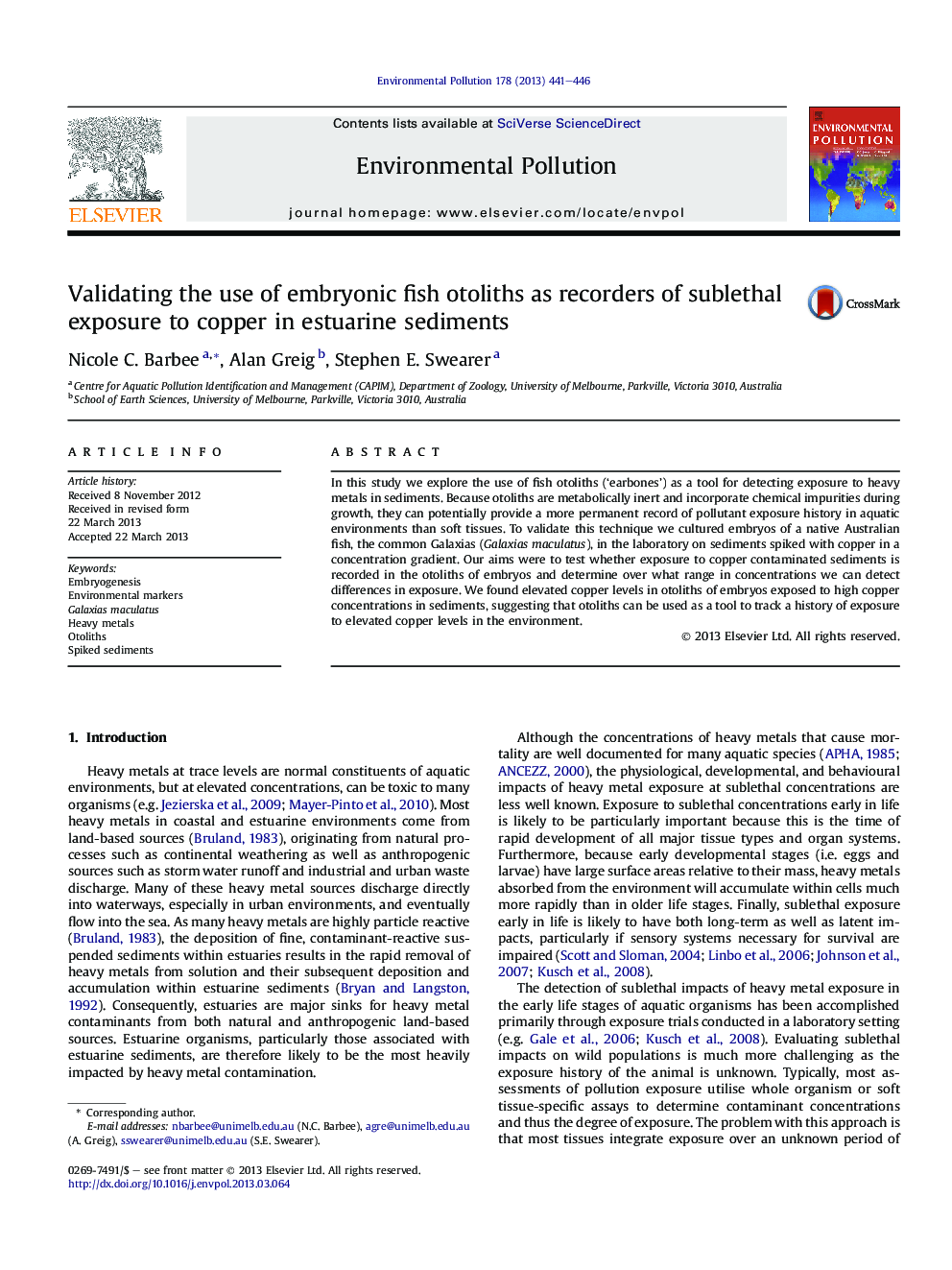| کد مقاله | کد نشریه | سال انتشار | مقاله انگلیسی | نسخه تمام متن |
|---|---|---|---|---|
| 6319003 | 1619194 | 2013 | 6 صفحه PDF | دانلود رایگان |

- Our aim was to determine if exposure to Cu is recorded in embryonic fish otoliths.
- Fish eggs were cultured on Cu-spiked sediments in a gradient of concentrations.
- Fish do uptake and incorporate Cu into their otoliths during development.
- High sediment Cu concentrations resulted in high otolith Cu concentrations.
- With further validation, otoliths could be used to track a history of Cu exposure.
In this study we explore the use of fish otoliths ('earbones') as a tool for detecting exposure to heavy metals in sediments. Because otoliths are metabolically inert and incorporate chemical impurities during growth, they can potentially provide a more permanent record of pollutant exposure history in aquatic environments than soft tissues. To validate this technique we cultured embryos of a native Australian fish, the common Galaxias (Galaxias maculatus), in the laboratory on sediments spiked with copper in a concentration gradient. Our aims were to test whether exposure to copper contaminated sediments is recorded in the otoliths of embryos and determine over what range in concentrations we can detect differences in exposure. We found elevated copper levels in otoliths of embryos exposed to high copper concentrations in sediments, suggesting that otoliths can be used as a tool to track a history of exposure to elevated copper levels in the environment.
Journal: Environmental Pollution - Volume 178, July 2013, Pages 441-446